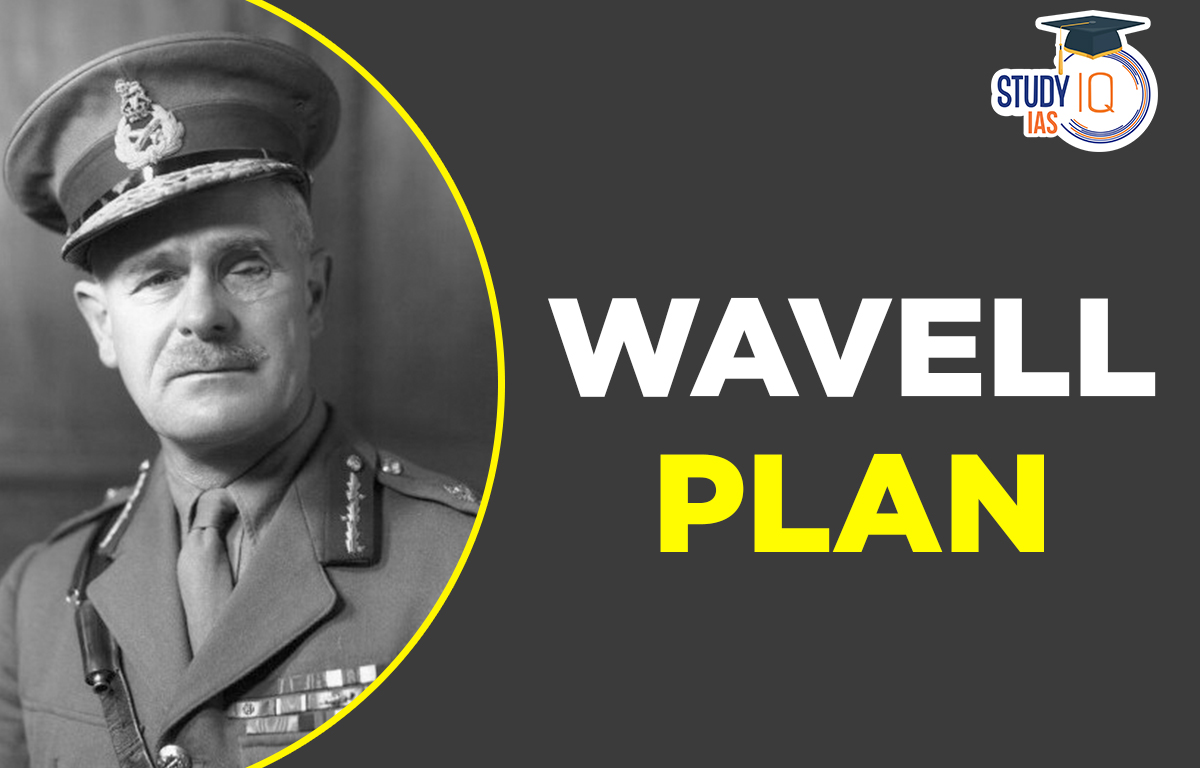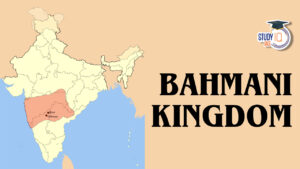Table of Contents
Wavell Plan
Initially presented at the Shimla Summit in 1945, the Wavell Plan. The Governor of India, Lord Wavell, was honoured with the title. The Wavell Plan for Indian self-government, which demanded distinct representation along racial and ethnic lines, was the subject of the Shimla Conference. The inability of the Muslim League and the Indian National Congress to come to an accord led to the failure of both the plan and the conference. This article will cover the Wavell Plan, which is useful for preparing for the UPSC exam.
Wavell Plan History
As a result of the Second World War, the British Empire confronted numerous socioeconomic difficulties, especially in maintaining their overseas colonies. The British government decided to give India the freedom it had long yearned for as a consequence. Japan hadn’t given up when the conflict was over. The brave acts of INA were about to come to a stop. Congress has been passed since the resignations in 1939.
Lord Wavell, the new Governor-General who had replaced Lord Linlithgow, made an effort to end the impasse in India in October 1943. He visited London in March 1945 for consultations. He broadcast the Wavell Plan, the British government’s plans to end the impasse in India, to the Indian people on June 14.
Wavell Plan Proposals
The governor-general and the commander-in-chief were the only two exceptions to the requirement that all executive council members be Indians. Muslims and Hindus of the caste were to be evenly represented. According to the 1935 Act, the rebuilt council was to serve as an interim administration (i.e., not accountable to the Central Assembly). On ministerial guidance, the governor-general was to use his veto power.
A joint list of candidates for the executive council was to be submitted to the viceroy by representatives from different parties. Separate lists were to be submitted in the event that a joint list was not feasible, with the prospect of talks on a new constitution being kept open after the war was won. Separate representation for the Scheduled Castes would also be present, and the prospect of a new constitution would be debated.
The Governor-veto would still be in place, but it wouldn’t be exercised too frequently. A member of the Council who is Indian was to receive the foreign affairs portfolio currently held by the Governor-General. Additionally, “provincial ministers in Province would return to the office and that a coalition would develop” were anticipated outcomes. The Simla Conference was opened to Congress officials in June 1945. A period of conflict that had endured since August 1942 came to an end with this.
Wavell Plan Shimla Conference
To debate the Wavell Plan’s provisions, 21 Indian political leaders were called to a conference in Shimla, the British government’s summer residence. One of the leaders was Maulana Abul Kalam Azad, who was the President of the Congress at the moment.
At the meeting, Mohammad Ali Jinnah was also in attendance. The meeting was called to discuss and approve the Wavell Plan for Indian self-government, and it may have resulted in an agreement for Indian self-government that gave Muslims distinct representation and limited the power of both groups in their majority areas. However, disagreement over choosing Muslim delegates caused the negotiations to break off. Because only the Muslim League has the power to represent Indian Muslims, Jinnah argued that no non-league Muslim should be represented on the Executive Council.
Jinnah also insisted that a clause be added requiring a two-thirds majority to pass a resolution if votes were divided and Muslim members objected. The 14-member Executive Council, to which Wavell had appointed six Muslims to, was granted the authority to veto any constitutional proposal by the British because it was not in their best interests.
However, only 25% of Indians identified as Muslim. Congress consequently rejected these irrational requests. Wavell abandoned the idea after the Muslim League resisted giving in. Lord Wavell declared the Convention to be a failure after the discussions. As a consequence, the conference possibly the last realistic chance for a united, independent India was abandoned.
Wavell Plan Failure
The Wavell Plan was essentially an effort to fully indigenize the Executive Council. Hindus and Muslims were to be represented on it according to caste balance. Gandhi took issue with the label “caste Hindus.” The Muslim League pushed for the inclusion of Muslim councillors. Congress insisted on electing representatives from all areas because it was a national organization.
The Congress and the League refused to budge from their respective stances, which is why the conference failed. Lord Wavell and Mr Jinnah both share some of the responsibility for the failure. Three parties were required to determine the conference’s fate: the Viceroy, the Muslim League, and the Congress. In contrast to the Muslim League, which saw Muslims as more than just a minority but as a separate country, the Congress saw India as a united country.
This disagreement served as the basis for the viceroy’s choice because the greater the difference, the longer British rule might be maintained. Jinnah was officially given the veto-final authority over any changes to the Indian constitution by Lord Wavell. Jinnah ended up being the only Muslim spokesperson. Wavell also changed the recommendations made by the Cripps Mission, which had designated INC as the only venue for communication with the government. Wavell established two platforms in Shimla as a consequence.
Jinnah’s respect was the same as that of Mahatma Gandhi. Make the Muslim League the primary authority on Indian Muslims. The Muslim League benefited greatly as a consequence, and they moved one step closer to founding their own country. The selection of the Executive Council members from Lord Wavell’s own roster should have been left in the hands of the authorities. Perhaps if minor changes had been mutually agreed upon, the Congress leaders could have been convinced to accept the list in its totality.
He made a mistake by allowing the league to essentially veto the entire plan, halting development on its own. Note that the Viceroy had told the Congress President that “no party to the conference could be permitted to obstruct settlement out of willfulness,” but it seems that Wavell’s hands, like Cripps’, were suddenly tied. The Shimla Conference’s failure had a direct impact on Mr. Jinnah and the Muslim League, as evidenced in the elections of 1945–1946.
The president of the Congress, Mr. Maulana Azad, blamed Mr. Jinnah directly for the collapse. Despite Jinnah’s endorsement of the British proposal, the Indian National Congress and All India Muslim League were much less receptive to the Muslim League’s requests when they met again under the Cabinet Mission the following year.
Wavell Plan UPSC
The Wavell Plan was created to break the present political impasse in India, but due to disagreements between Muslim League and Congress leaders, Lord Wavell abandoned the proposals, and the proposals were ultimately scrapped at the Shimla Conference. For all the details on the Wavell Plan for UPSC Exam preparations, go through this article.


 Bahmani Kingdom (1347-1527 AD), History,...
Bahmani Kingdom (1347-1527 AD), History,...
 Indus River System, Tributaries, and Sin...
Indus River System, Tributaries, and Sin...
 Jallianwala Bagh Massacre, Date, History...
Jallianwala Bagh Massacre, Date, History...





















